Get the latest news, application notes, and upcoming webinars from XGen Bio Inc.
- About
- About XGen
- Our team
- Follow Us
- Youtube

CONTACT US
Copyright© 2025, Xgen. All rights Reserved.
Terms & Conditions | Privacy Policy | Cookie Policy
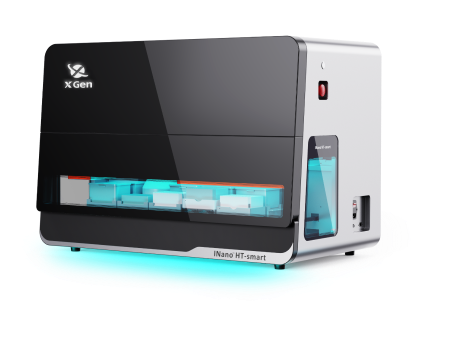
INano™ HT-Smart
End-to-End High-Throughput mRNA/LNP Screening Workstation
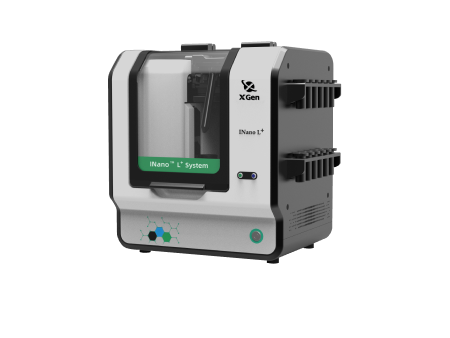
INano™ L+
Rapid Nanomedicine Preparation System
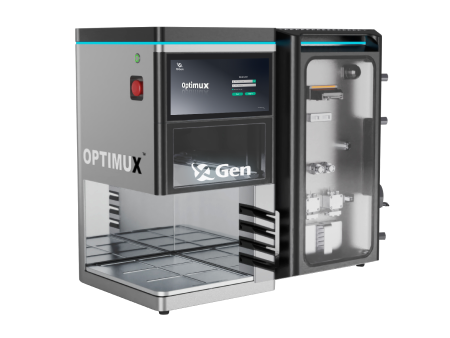
INano™ Optimux
Medium-Scale Formulation (Reusable System & GMP Compliant)
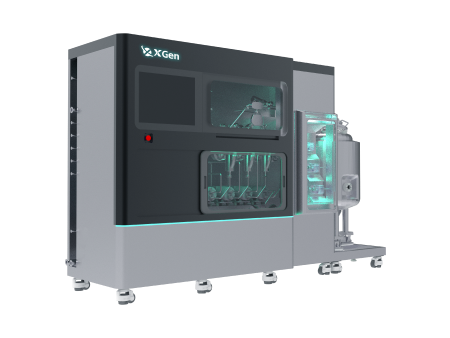
INano™ S
Commercial LNP Manufacturing System
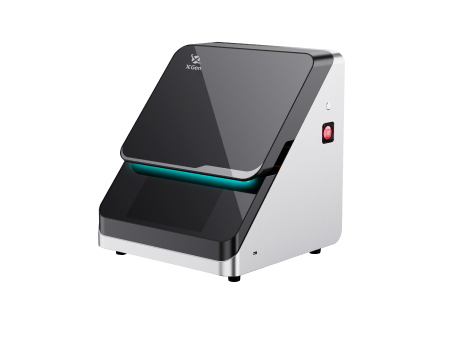
XNano™ PCV
LNP Manufacturing System For Emerging Applications
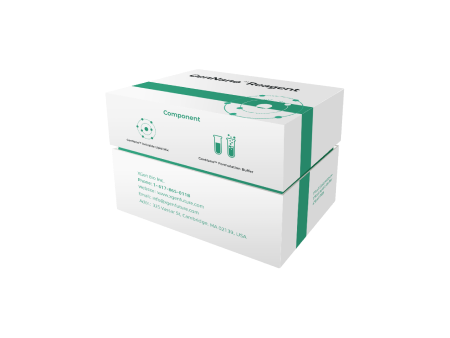
mRNA-LNP kit
Cell Transfection Kit
Application Kit
Organ-specific Targeting Kit
Validation Kit
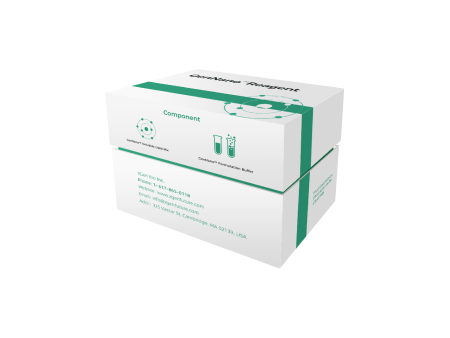
DNA/Protein-LNP Kit
DNA-LNP Kit
Protein-LNP Kit
|
The rapid approval of SARS-CoV-2 mRNA lipid nanoparticle (LNP) vaccines demonstrates the versatility of mRNA LNPs in meeting urgent vaccine demands. However, mRNA vaccines do not induce mucosal immune responses or provide broad protection against emerging variants. To enhance the cross-protective capacity of mRNA vaccines, this study engineered a novel mRNA LNP that co-encapsulates mRNA constructs encoding a cytokine adjuvant and the influenza A hemagglutinin (HA) antigen for intradermal vaccination. The adjuvant mRNA encodes a novel fusion cytokine, GIFT4, which consists of granulocyte-macrophage colony-stimulating factor (GM-CSF) and interleukin-4 (IL-4). This Research found that the adjuvanted mRNA LNP vaccine induced high levels of humoral antibodies and systemic T cell responses targeting heterologous influenza antigens, protecting immunized mice from influenza A virus infection. Furthermore, the vaccine induced early germinal center reactions in the draining lymph nodes and promoted antibody-secreting B cell responses. Additionally, a second adjuvant mRNA encoding CCL27 was generated, which similarly enhanced both the humoral and cellular immune responses in mice. Notably, intradermal administration of either GIFT4 or CCL27 mRNA-adjuvanted mRNA LNP vaccines led to the induction of lung tissue-resident T cells. These findings suggest that cytokine mRNA can serve as a versatile adjuvant component in mRNA LNP vaccines to elicit a strong immune response against viral variants.
Figure 1: Schematic diagram of the GIFT fusion protein (GM-CSF and IL-4) and mRNA/LNP
1. Results
1.1 GIFT4 mRNA Adjuvant-Enhanced HA mRNA LNP Vaccine Induces Enhanced Humoral Immune Responses and Protective Effects:
In this study, the adjuvant effects of GIFT4 mRNA was assessed at different doses (1 μg, 2 μg, or 5 μg). Compared to the HA mRNA LNP alone, the GIFT4 mRNA-adjuvanted HA mRNA LNP significantly increased the levels of Aichi-specific IgG and its subtypes (IgG1 and IgG2a) antibodies in mouse sera three weeks after a single intradermal vaccination. These results suggest that GIFT4 mRNA effectively enhances the humoral immune response. Next, the protective effects of the GIFT4 mRNA-adjuvanted LNP vaccine was evaluated against lethal challenges with both the homologous A/Aichi virus and heterologous A/Phi virus. Four weeks after boosting, mice were intranasally challenged with 5×LD50 of A/Aichi or 3×LD50 of A/Phi virus. Mice immunized with the HA+GIFT4 mRNA LNP vaccine experienced mild weight loss and had a 100% survival rate, whereas mice receiving only the HA mRNA LNP vaccine showed moderate weight loss with a 75% survival rate. Naive mice exhibited severe lethality following infection with both viruses. These results indicate that the GIFT4 mRNA-adjuvanted LNP vaccine provides effective protection for mice against lethal doses of both homologous and heterologous influenza viruses.
Figure 2: Antibody Immune Responses Induced by Intradermal Injection of GIFT mRNA Adjuvant LNP
1.2 GIFT4 mRNA Adjuvant-Enhanced HA mRNA LNP Vaccine Improves T Cell Immune Responses:
In addition to evaluating the antibody responses in the serum, characterizing cellular immune responses in peripheral lymphoid tissues is essential for assessing the effectiveness of vaccine candidates. Further investigation into antigen-specific T cell responses revealed that the GIFT4 mRNA adjuvant-enhanced LNP vaccine induced higher levels of CD4+ and CD8+ T cell responses compared to the HA mRNA LNP vaccine alone. These T cells were capable of secreting cytokines such as IFN-γ and IL-4, indicating that the vaccine triggered both Th1 and Th2 immune responses simultaneously.
Figure 3: Cellular Immune Responses Induced by Intradermal Injection of GIFT mRNA Adjuvant LNP
1.3 GIFT4 mRNA Adjuvant-Enhanced HA mRNA LNP Stimulates Robust B Cell Immune Responses and Early Germinal Center Reactions:
To assess the impact of GIFT4 mRNA adjuvant-enhanced mRNA LNP on B cell immune responses, splenocytes were collected four weeks after boosting and analyzed for antibody-secreting cells (ASCs) using ELISpot. Compared to naive mice, mice immunized with the GIFT4 mRNA-adjuvanted LNP vaccine showed a significant increase in the number of ASCs in their spleens. Additionally, seven days after immunization, elevated levels of CD95+ and CD95+GL7+ B cells were detected in the draining inguinal lymph nodes (ILNs), indicating an early activation of the germinal center (GC) response. These findings suggest that GIFT4 mRNA adjuvant enhances B cell responses and promotes early germinal center reactions.
Figure 4: B Cell Responses and Early Germinal Center Immune Reactions Induced by Intradermal Injection of GIFT mRNA Adjuvant LNP
1.4 CCL27 mRNA as an Adjuvant Similarly Enhances Humoral and Cellular Immune Responses:
In addition to GIFT4 mRNA, another cytokine mRNA, CCL27 mRNA, was tested for its adjuvant effects. The results showed that the CCL27 mRNA-adjuvanted LNP vaccine also enhanced both humoral and cellular immune responses, exhibiting adjuvant activity similar to GIFT4 mRNA. Under heterologous viral antigen stimulation, the CCL27 mRNA-adjuvanted LNP vaccine induced higher levels of cross-binding antibodies and antigen-specific T cell responses compared to the HA mRNA LNP vaccine alone.
1.5 GIFT4 or CCL27 mRNA Adjuvant-Enhanced HA mRNA LNP Intradermal Immunization Induces T Cell Immune Responses in the Lungs:
To evaluate the potential immune responses in the lungs following intradermal mRNA LNP vaccination, mice were sacrificed four weeks after boosting, and lung samples were collected. Compared to naive mice and those immunized with HA mRNA LNP vaccine alone, mice immunized with GIFT4 or CCL27 mRNA adjuvant-enhanced LNP vaccines exhibited a significant increase in the number of CD4+CD44+ T cells in the lungs. These results indicate that intradermal immunization with GIFT4 or CCL27 mRNA adjuvant-enhanced LNP vaccines induces lung tissue-resident T cell responses, which are crucial for protection against respiratory pathogens.
Figure 5: Effects of Intradermal Injection of CCL27 mRNA Adjuvant LNP on Cellular and Humoral Immune Responses
Figure 6: Effects of Intradermal Injection of GIFT and CCL27 mRNA Adjuvant LNP on Pulmonary Mucosal Immune Responses and Cellular Immune Responses
2. Conclusion
This study designed a novel mRNA LNP vaccine that co-encapsulates mRNA encoding a cytokine adjuvant and an antigen. Intradermal vaccination with this formulation induced robust humoral and cellular immune responses in mice, providing broad protection against influenza A virus infection. Compared to the LNP vaccine containing only the antigen mRNA, the adjuvanted vaccine showed significant advantages in enhancing antibody production, boosting T cell responses, and protecting mice from lethal viral challenges. This study also demonstrated that cytokine mRNA adjuvant approach is versatile and can be adapted to achieve the desired immune effect for specific target pathogens. The feasibility of this approach is supported by recent studies using mRNA-encoded IL-12/p70 as an adjuvant in COVID-19 mRNA vaccines, further highlighting the potential of cytokine mRNA adjuvants to enhance vaccine efficacy.
Reference:Wei L, Zhu W, Dong C, et al. Lipid nanoparticles encapsulating both adjuvant and antigen mRNA improve influenza immune cross-protection in mice[J]. Biomaterials, 2025, 317: 123039. |